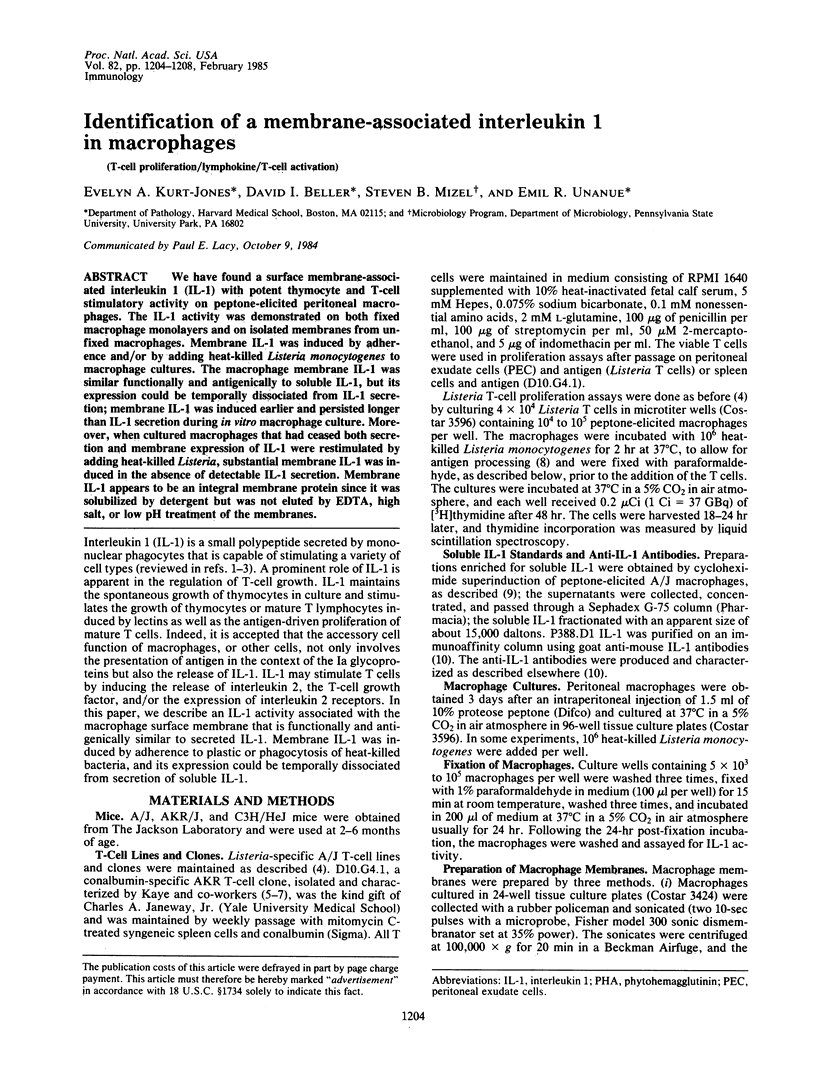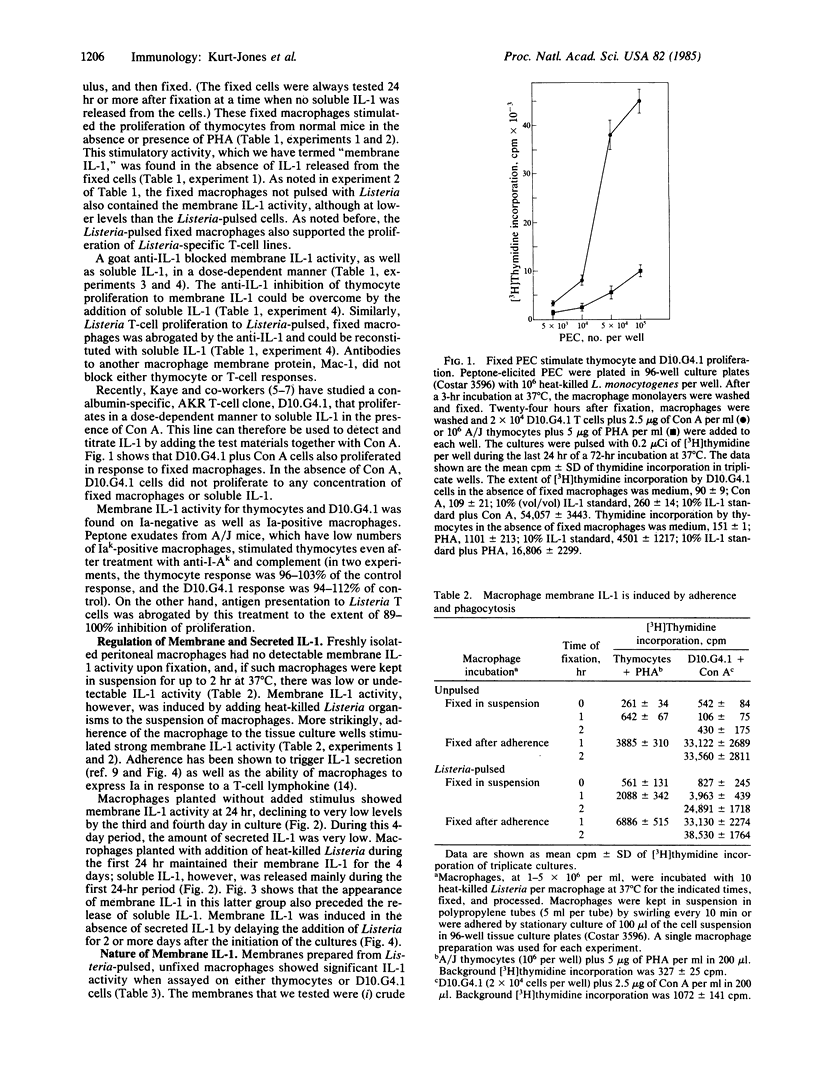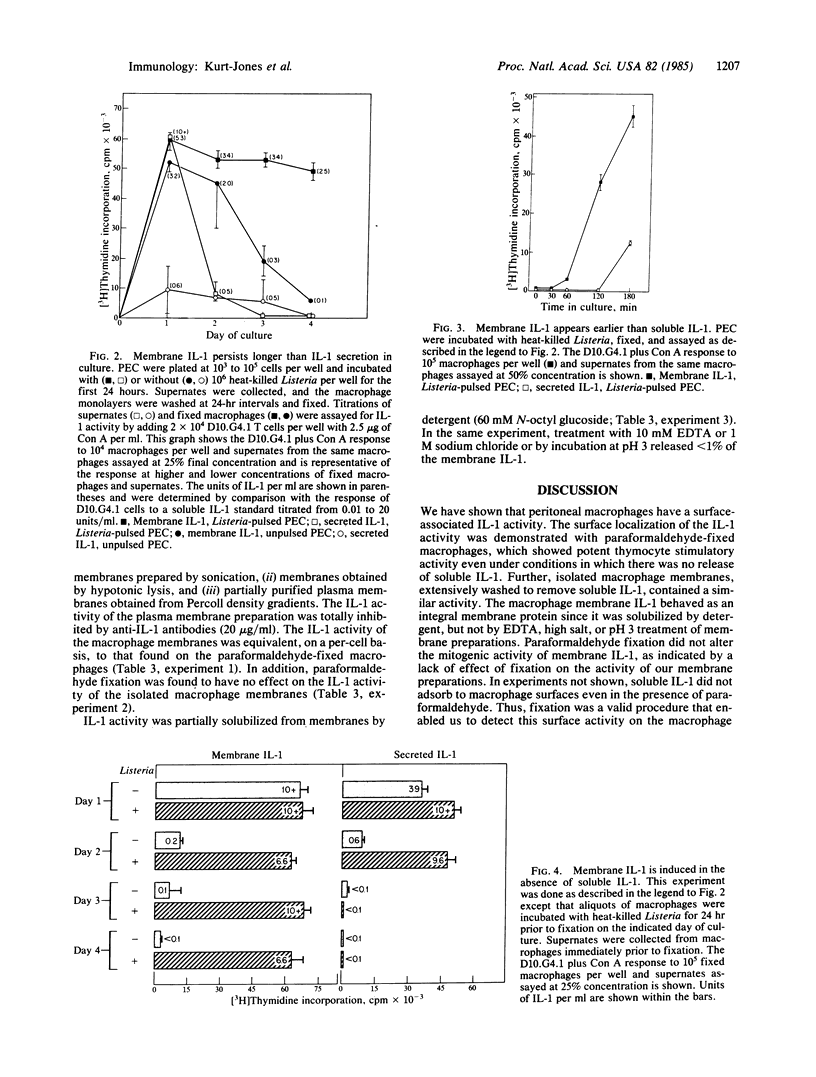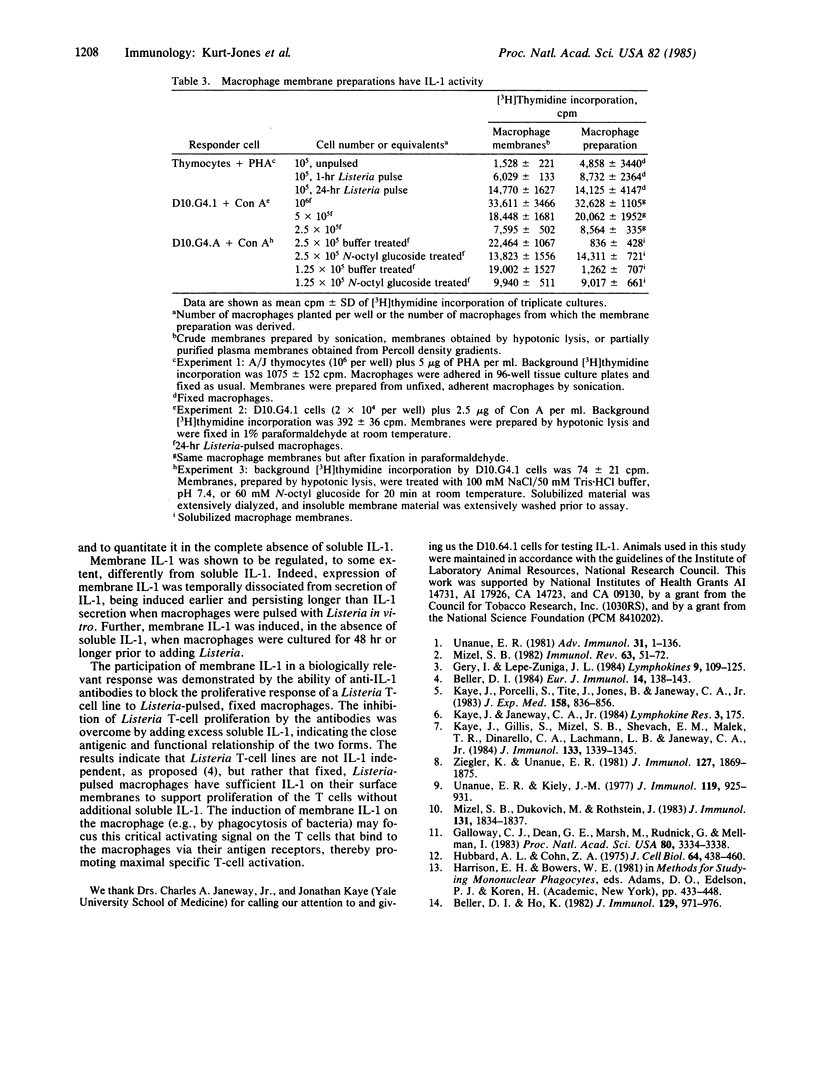Abstract
We have found a surface membrane-associated interleukin 1 (IL-1) with potent thymocyte and T-cell stimulatory activity on peptone-elicited peritoneal macrophages. The IL-1 activity was demonstrated on both fixed macrophage monolayers and on isolated membranes from unfixed macrophages. Membrane IL-1 was induced by adherence and/or by adding heat-killed Listeria monocytogenes to macrophage cultures. The macrophage membrane IL-1 was similar functionally and antigenically to soluble IL-1, but its expression could be temporally dissociated from IL-1 secretion; membrane IL-1 was induced earlier and persisted longer than IL-1 secretion during in vitro macrophage culture. Moreover, when cultured macrophages that had ceased both secretion and membrane expression of IL-1 were restimulated by adding heat-killed Listeria, substantial membrane IL-1 was induced in the absence of detectable IL-1 secretion. Membrane IL-1 appears to be an integral membrane protein since it was solubilized by detergent but was not eluted by EDTA, high salt, or low pH treatment of the membranes.
Full text
PDF




Selected References
These references are in PubMed. This may not be the complete list of references from this article.
- Beller D. I. Functional significance of the regulation of macrophage Ia expression. Eur J Immunol. 1984 Feb;14(2):138–143. doi: 10.1002/eji.1830140207. [DOI] [PubMed] [Google Scholar]
- Beller D. I., Ho K. Regulation of macrophage populations. V. Evaluation of the control of macrophage Ia expression in vitro. J Immunol. 1982 Sep;129(3):971–976. [PubMed] [Google Scholar]
- Galloway C. J., Dean G. E., Marsh M., Rudnick G., Mellman I. Acidification of macrophage and fibroblast endocytic vesicles in vitro. Proc Natl Acad Sci U S A. 1983 Jun;80(11):3334–3338. doi: 10.1073/pnas.80.11.3334. [DOI] [PMC free article] [PubMed] [Google Scholar]
- Hubbard A. L., Cohn Z. A. Externally disposed plasma membrane proteins. I. Enzymatic iodination of mouse L cells. J Cell Biol. 1975 Feb;64(2):438–460. doi: 10.1083/jcb.64.2.438. [DOI] [PMC free article] [PubMed] [Google Scholar]
- Kaye J., Gillis S., Mizel S. B., Shevach E. M., Malek T. R., Dinarello C. A., Lachman L. B., Janeway C. A., Jr Growth of a cloned helper T cell line induced by a monoclonal antibody specific for the antigen receptor: interleukin 1 is required for the expression of receptors for interleukin 2. J Immunol. 1984 Sep;133(3):1339–1345. [PubMed] [Google Scholar]
- Kaye J., Janeway C. A., Jr Induction of receptors for interleukin 2 requires T cell Ag:Ia receptor crosslinking and interleukin 1. Lymphokine Res. 1984 Summer;3(4):175–182. [PubMed] [Google Scholar]
- Kaye J., Porcelli S., Tite J., Jones B., Janeway C. A., Jr Both a monoclonal antibody and antisera specific for determinants unique to individual cloned helper T cell lines can substitute for antigen and antigen-presenting cells in the activation of T cells. J Exp Med. 1983 Sep 1;158(3):836–856. doi: 10.1084/jem.158.3.836. [DOI] [PMC free article] [PubMed] [Google Scholar]
- Mizel S. B., Dukovich M., Rothstein J. Preparation of goat antibodies against interleukin 1: use of an immunoadsorbent to purify interleukin 1. J Immunol. 1983 Oct;131(4):1834–1837. [PubMed] [Google Scholar]
- Mizel S. B. Interleukin 1 and T cell activation. Immunol Rev. 1982;63:51–72. doi: 10.1111/j.1600-065x.1982.tb00411.x. [DOI] [PubMed] [Google Scholar]
- Unanue E. R., Kíely J. M. Synthesis and secretion of a mitogenic protein by macrophages: description of a superinduction phenomenon. J Immunol. 1977 Sep;119(3):925–931. [PubMed] [Google Scholar]
- Unanue E. R. The regulatory role of macrophages in antigenic stimulation. Part Two: symbiotic relationship between lymphocytes and macrophages. Adv Immunol. 1981;31:1–136. doi: 10.1016/s0065-2776(08)60919-0. [DOI] [PubMed] [Google Scholar]
- Ziegler K., Unanue E. R. Identification of a macrophage antigen-processing event required for I-region-restricted antigen presentation to T lymphocytes. J Immunol. 1981 Nov;127(5):1869–1875. [PubMed] [Google Scholar]


